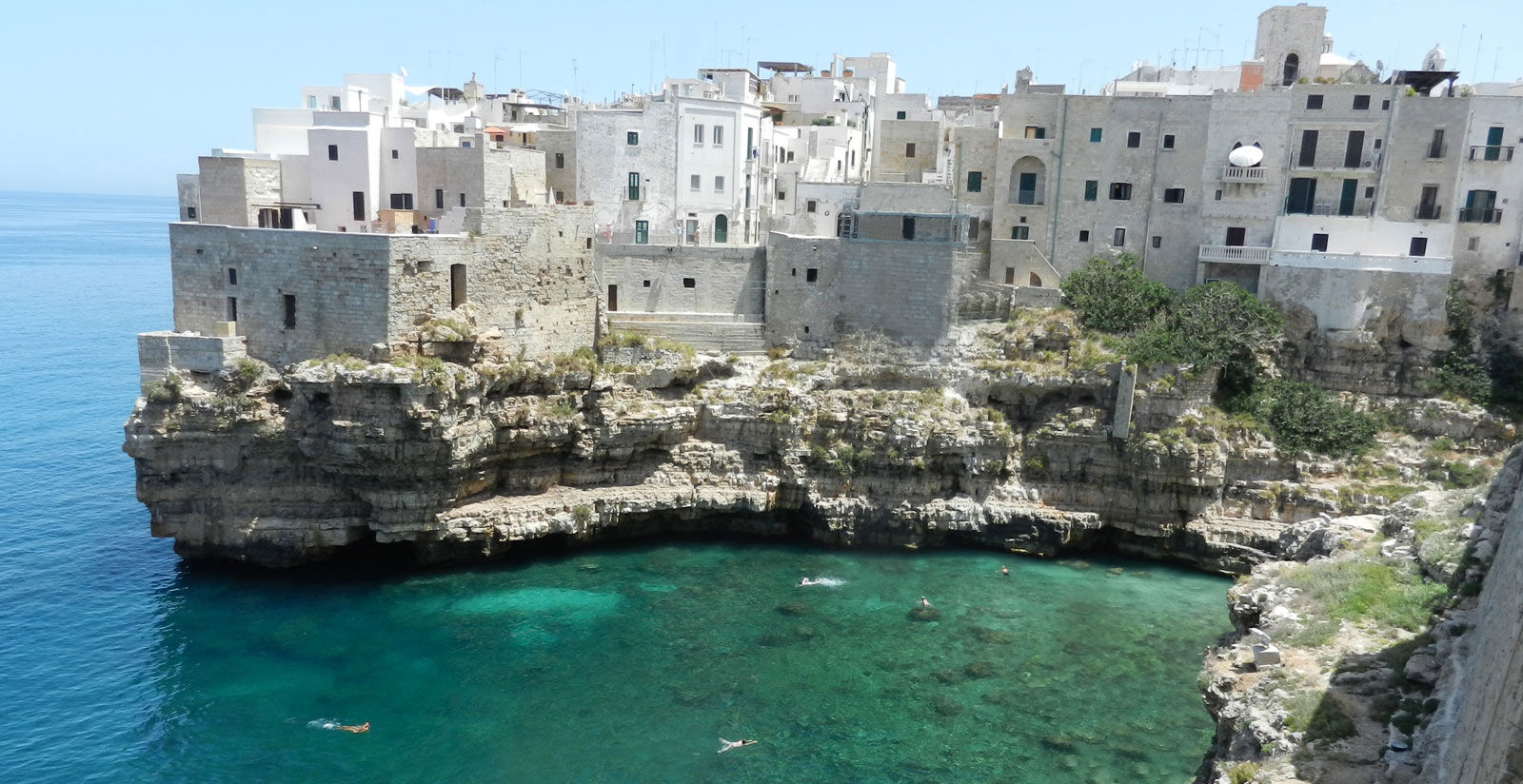Polignano a Mare is an Italian town in the province of Bari, in Puglia.
The oldest part of the town stands on a rock spur overhanging the Adriatic sea, at a distance of 33 kilometres to the south of the chief town of Bari. The town’s economy is mainly based on tourism, agriculture and fishing.
Its sea caves are of great natural interest and the historic centre and ruins dating from the Roman domination of great historic interest.
The latter include the Bridge over the Trajan Way, which is still practicable and which runs across Lama Monachile.
Polignano a Mare received the Blue Flag in 2008 and 2009, the award granted by the Foundation for Environmental Education to European coastal locations meeting the quality criteria related to bathing parameters and the services offered in relation to parameters such as cleanliness of the beach and tourist resorts.
Monuments and places of interest
The sea caves are of considerable natural interest while the historic centre and ruins dating from the Roman domination are of historical importance. The latter include the Bridge over the Trajan Way, which is still practicable and which runs across Lama Monachile, the deep cove immediately to the north of the historic centre.
The main church, named in honour of Our Lady of the Assumption and looking out onto the small square in the heart of the historic centre, was a cathedral until 1818 when the small diocese of Polignano was incorporated into the diocese of Monopoli.
The inside of the church houses some works attributed to the sculptor Stefano da Putignano, who lived between the 17th and 18th centuries, such as the famous stone nativity scene.
The impressive Benedictine abbey complex stands tall in the coastal hamlet of San Vito located behind the small port.
Celebrities linked to Polignano a mare
The statue entitled to Domenico Modugno can be found along the town’s waterfront.
Domenico Modugno (Polignano a Mare, 1928 - Lampedusa, 1994), a singer/songwriter and actor, author and singer of the famous song Nel blu dipinto di blu.
Born in Poligano but brought up in San Pietro Vernotico, he had a difficult relationship with the town given that, for artistic reasons, he much preferred to consider himself Sicilian, before making his peace with the town on 26 August 1993, the date of his last concert attended by 70,000 people.
A statue dedicated to him, the work of the sculptor Herman Majer, was inaugurated on 31 May 2009.







